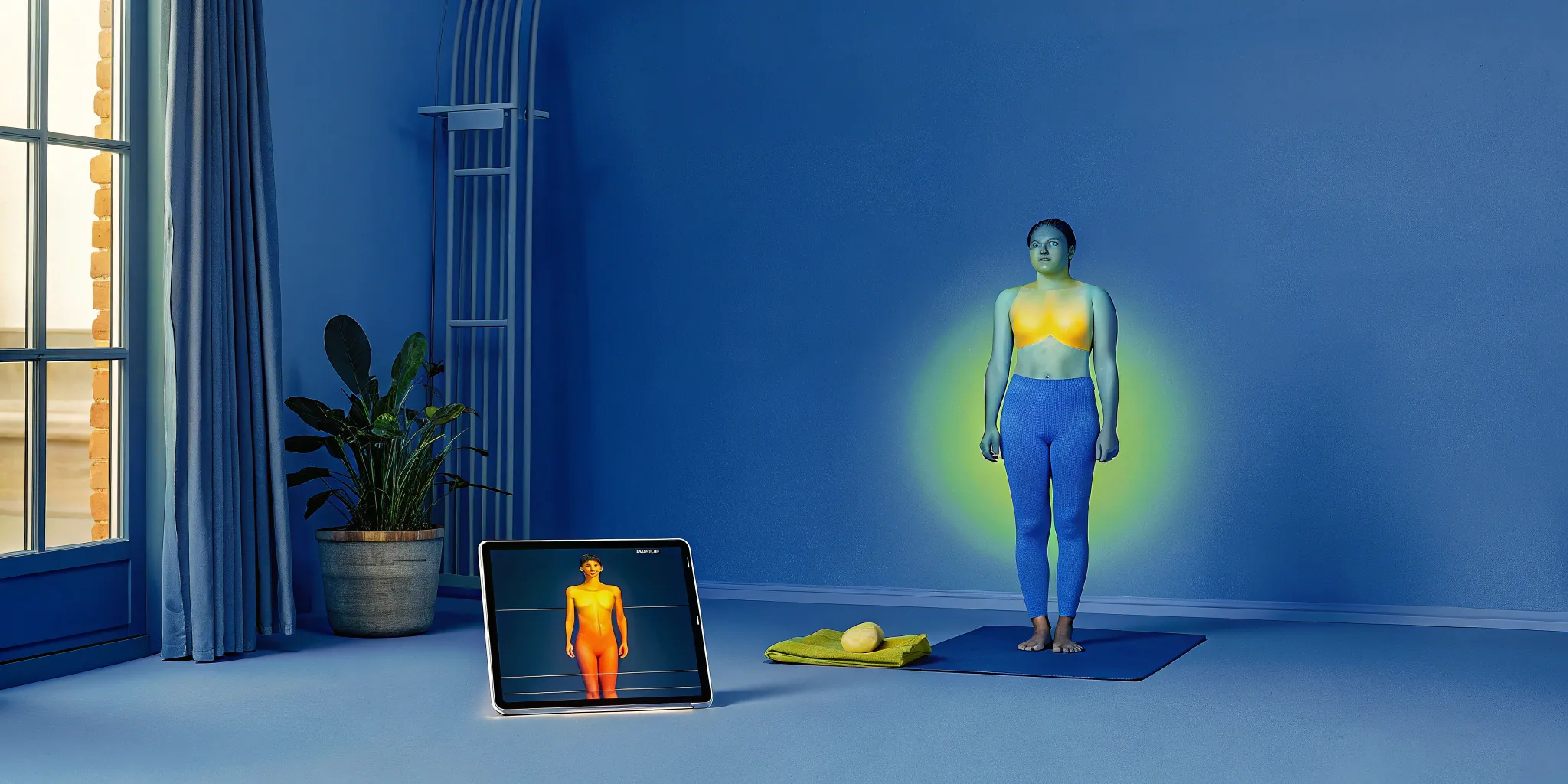What Is Body Rating? A Guide for Wellness Businesses


Heading 2
Heading 1
Heading 3
Heading 4
Heading 5
Heading 6
Lorem ipsum dolor sit amet, consectetur adipiscing elit, sed do eiusmod tempor incididunt ut labore et dolore magna aliqua. Ut enim ad minim veniam, quis nostrud exercitation ullamco laboris nisi ut aliquip ex ea commodo consequat. Duis aute irure dolor in reprehenderit in voluptate velit esse cillum dolore eu fugiat nulla pariatur.
Block quote
Ordered list
- Item 1
- Item 2
- Item 3
Unordered list
- zz
- Item B
- Item C
Bold text
Emphasis
Superscript
Subscript
As a wellness professional, you have the power to change the conversation around body composition. Instead of letting clients get discouraged by a single number, you can guide them toward a narrative of progress. A comprehensive body rating provides the data, but you provide the context. It’s your expertise that turns a scan into a story of small wins, shifting focus from a static measurement to a dynamic journey. This article will show you how to interpret and communicate these metrics effectively, empowering your clients to see their efforts pay off and stay motivated for the long haul.
Key Takeaways
- Use data as a conversation starter: A single metric like BMI or weight doesn't define health. Use body composition data to open up a broader discussion about a client's habits, from nutrition to stress management.
- Prioritize progress over perfection: Help clients see the big picture by tracking their results over time. This shifts the focus from a single, static measurement to their dynamic, ongoing journey, which is far more motivating.
- Educate to build trust: Understand and explain the nuances of your body rating tools, such as how hydration can affect a scan. This transparency shows your expertise and helps you and your client interpret results accurately.
Common body rating myths
Body rating tools are powerful, but they can also create confusion for clients. As a wellness professional, you can build trust by helping them see past the noise and use these metrics effectively. Let's clear up a few common myths so you can guide your clients with confidence.

One of the biggest misconceptions is that a single number defines a person's health. The number on the scale or a BMI calculation rarely tells the whole story. The National Heart, Lung, and Blood Institute even notes that BMI is just one piece of the puzzle, as it doesn't distinguish between fat and muscle. This is where modern body ratings offer a clearer view, but it's important to frame them correctly. A "good" rating doesn't automatically equal perfect health, and a "less ideal" one isn't a cause for panic. These are data points, not diagnoses. Use them to start a conversation about a client's overall well-being, from nutrition to stress management.
It's also key to be transparent about the limitations of any system you use. For example, a client's hydration levels can influence bioimpedance analysis. Understanding the nuances of your technology helps you interpret and apply results effectively. Instead of focusing on a single scan, guide clients to look at trends over time. This shifts the focus from a static number to dynamic progress, which is incredibly motivating. Use this data to create truly personalized programs that help clients reach their goals, whether they're at a health club or a weight management center. By balancing advanced metrics with a holistic view, you empower clients to build sustainable, healthy habits.
Frequently Asked Questions
How can I explain to a client that BMI isn't the full picture of their health? You can start by explaining that BMI is a simple screening tool that uses only height and weight, so it can't tell the difference between muscle and fat. An athlete, for example, might have a high BMI because of their muscle mass, not because of excess body fat. This is a perfect opportunity to introduce more detailed metrics from a body scanner, which can show them their actual body composition and provide a much clearer, more accurate view of their health.
A client's scan results weren't what they expected and now they're discouraged. What should I say? First, acknowledge their feelings and reassure them that one scan is just a snapshot in time, not a final judgment. Remind them of all the progress they've made that a scan can't measure, like having more energy, lifting heavier, or clothes fitting better. Then, you can use the results as a constructive tool to review their current plan together and see if any small adjustments could help them get back on track.
How often should I have my clients use a body rating tool? Consistency is more important than frequency. Scanning too often can create anxiety over normal daily fluctuations in weight and hydration. I find that scanning every four to six weeks is a great rhythm. This gives enough time for their hard work to show up as a meaningful trend in the data, rather than getting caught up in the small, day-to-day changes that don't reflect their true progress.
What factors can affect the accuracy of a body scan? It's helpful to let clients know that several things can influence a scan's results, especially with bioimpedance technology. Factors like their hydration level, whether they've recently exercised, or even if they've just eaten a large meal can cause temporary shifts. To get the most reliable trend data, advise them to scan under similar conditions each time, such as in the morning before eating or working out.
How do I shift a client's focus from a single number to their overall progress? Frame the data as a tool for collaboration, not a report card. When you review a scan, immediately connect the numbers to their real-life efforts and celebrate non-scale victories right alongside the metrics. By consistently showing them their progress trends over several months, you help them see the bigger picture. This teaches them to view the data as a guide for their journey, not a single, all-important score.




